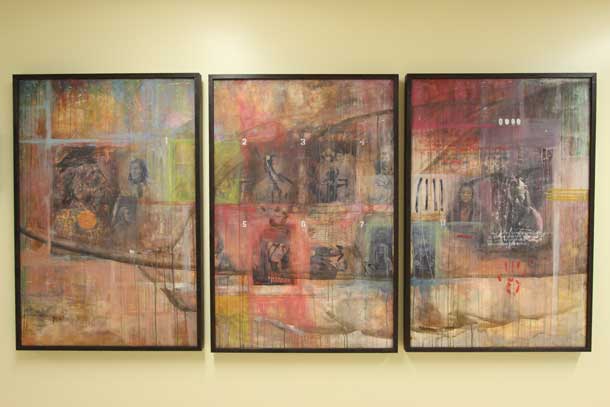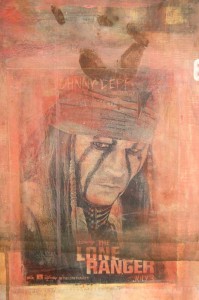

THUNDER BAY – Actor Johnny Depp’s portrayal of Tonto in the “The Lone Ranger” and the ensuing controversy inspired local artist Cree Stevens to explore reactions to the character – her own and others’ – through art.
Tonto is a fictional character, the Native American companion of the Lone Ranger, a popular American Western character set in 19th century western America. Many critics found it racist that Depp, a non-Aboriginal, was cast in the role of Tonto for the 2013 film.

“Some people around me, including non-Aboriginal people, were upset about him taking on that role, so I went to see the movie,” says Stevens.
“I liked its originality, especially where the perspective was coming from this time. Instead of the Lone Ranger’s, this was from Tonto’s perspective. And their characters were both humanized in this movie. I also liked that Tonto wasn’t a sidekick, but an equal. For me, it was really positive.”
Stevens felt that the actor’s portrayal demonstrated respect for Aboriginal culture, particularly the humour he brought to the character. “I’d say, of any culture, Aboriginal people like to laugh a lot.”
Although Stevens thought Depp did a good job, many people around her assumed that she wouldn’t be okay with him in that role. “That is partly why I did the piece. People made assumptions and it bothered me that they assumed.”
Stevens’ father is Ojibwe; her first name comes from her Cree grandfather on her father’s side; and her mother is non-Aboriginal. She says that themes of particular interest to her are preconceived ideas and assumptions about Aboriginal people or non-Aboriginal people and their rights about integrating culture into their lives, ideas about what people should and shouldn’t do because of their cultural background. “I have had two thought processes, growing up with one parent who is Aboriginal and one who is not. I’ve had to try to find my way within these two cultures.”
Steven’s ‘Tonto’ is mixed media – acrylic paint, paper, screen, photo negatives, part of a feather – and took the artist countless hours. The work was purchased by Debra Chenier, owner of Chenier Fine Arts, and donated to Regional Cancer Care Northwest at Thunder Bay Regional Health Sciences Centre (TBRHSC) as part of its National Aboriginal Day celebrations.
Aboriginal Health is one of TBRHSC’s strategic directions, guiding its operational goals and activities. In order to establish an environment that is more welcoming to Aboriginal patients and families, TBRHSC recognizes the need to develop facilities that are culturally welcoming for patients and families and to feature Aboriginal artwork and stories throughout the facility.
The artist says it feels good that people have had positive reactions to the painting in spite of the controversy around Depp’s role and that she is honoured and humbled to have it on display at Regional Cancer Care Northwest. “I’ve known a lot of people in my life who have battled cancer. It feels good that I might be helping patients and families feel something. Of all the places it could have gone, it touches me that it can be in a place where people are pretty contemplative about their lives.”
Donna Faye

